The Northeast’s Ticking Time Bomb: Illegal Immigration’s Threat to Identity and Stability
MIGRATION
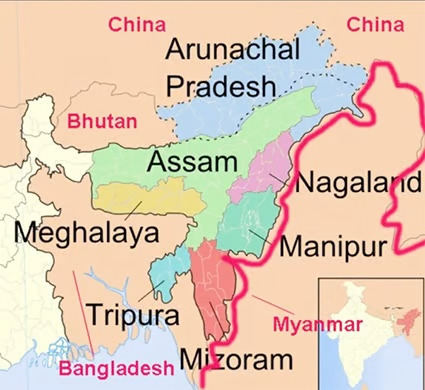

Imphal: A silent crisis is unfolding in Northeast India, where the influx of illegal immigrants from Bangladesh and Myanmar is reshaping the region’s soul. In Manipur, former Chief Minister N. Biren Singh is waging a relentless battle to protect indigenous communities, while Mizoram grapples with a humanitarian dilemma and Tripura mourns a lost tribal majority. Tamil Nadu Governor RN Ravi, a former Naga peace negotiator, has sounded a chilling alarm: this “infiltration” could lead to “another partition.” As the region teeters on the edge, this story explores the human toll, political firestorm, and geopolitical stakes of illegal immigration in Northeast India, a land where borders blur and identities clash.
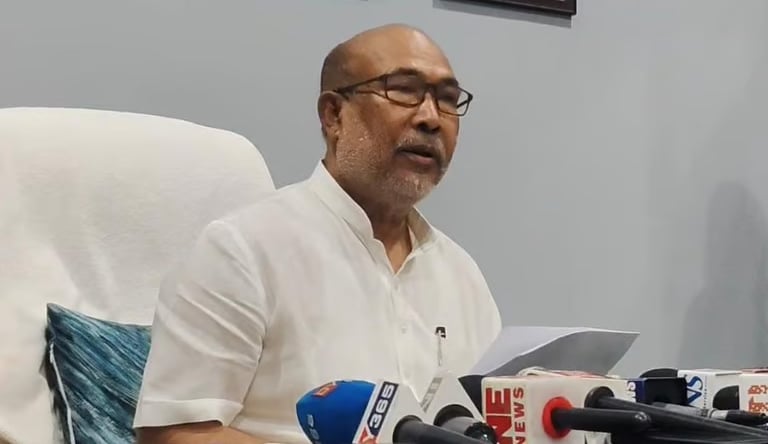

Image: Former Chief Minister of Manipur N.Biren Singh
N. Biren Singh’s Last Stand
At the heart of Manipur’s fight is N. Biren Singh, a leader who’s made illegal immigration his crusade. Since 2017, his government has rooted out 5,457 undocumented immigrants, uncovered hidden settlements in Churachandpur’s Singhat and Holenphai, and pushed for deportations. In March 2024, seven Myanmar nationals were sent back, with 77 more queued up, after New Delhi scrapped the Free Movement Regime (FMR) and moved to fence the 398-km India-Myanmar border. Singh’s call for a National Register of Citizens (NRC), modeled on Assam’s, is a desperate bid to protect Manipur’s small, fragile population. “Our identity is under siege,” he warned in 2025, fresh from a meeting with Tripura’s TIPRA Motha leader Pradyot Manikya Debbarma to forge a regional alliance against encroachment.
Singh links the influx to deforestation, poppy cultivation, and drug trafficking, accusing Myanmar militias of fueling unrest. The 2023 Meitei-Kuki clashes, sparked by a court order on tribal status, left 260 dead, 1,500 injured, and 70,000 displaced—a stark reminder of how migration inflames ethnic tensions. Despite resigning in 2025 amid criticism, Singh’s voice remains loud, his 2022 post about a Myanmarese national with a fake Aadhaar card still echoing online.
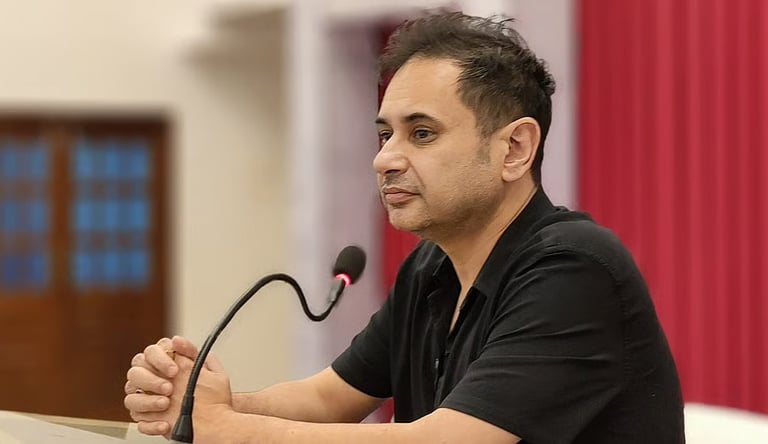

Image: Pradyot Deb Barma,founder of Tipra Motha (Credit: X/@PradyotManikya)
The Ghosts of Tripura’s Past
Tripura tells a darker tale. Once a tribal bastion, the state’s indigenous Tiprasa have been dwarfed by decades of migration from East Bengal and Bangladesh. By the 1970s, Bengalis—many tied to these waves—had flipped the demographic script. The 2011 Census shows tribes at just 31% of the population, a steep fall from their historic dominance. Land rights have vanished, languages are fading, and political power has slipped away. “We’re strangers in our own home,” a Tiprasa elder lamented.
The 1990s saw groups like the All Tripura Tiger Force take up arms against “Bangladeshi infiltration.” The 2024 Tripura Peace Accord, with 328 militants surrendering and a ₹250 crore rehabilitation package, quelled some unrest but ignored the root issue: a demographic tide that’s left tribes marginalized. Tripura’s story is a warning for Manipur and Mizoram, where similar forces are at play.
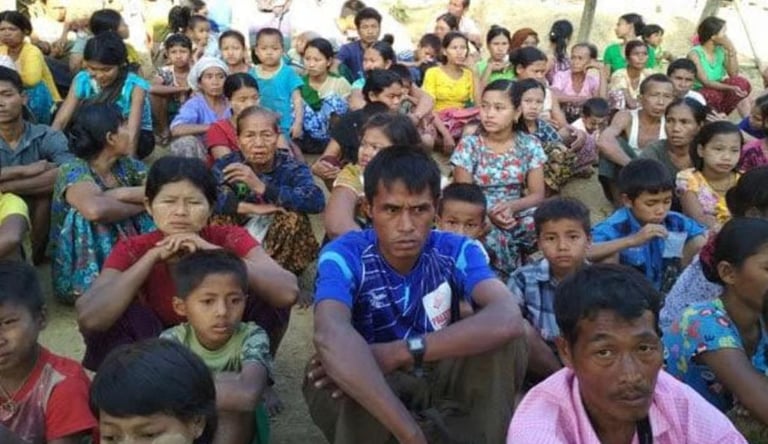

Image: Myanmar Refugees in Mizoram
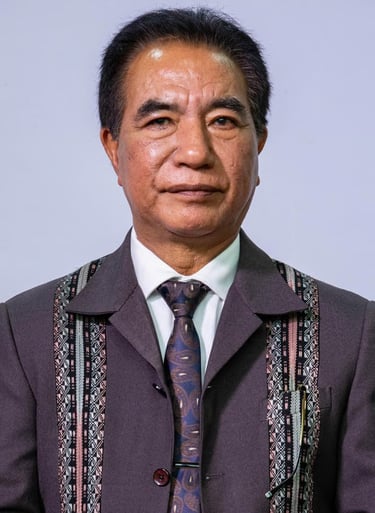

Image: Mizoram Chief Minister Pu Lalduhoma
Mizoram’s Heart vs. Head
Mizoram faces a wrenching choice. Since the 2021 Myanmar coup, some 50,000 Chin refugees—ethnically tied to the Mizos—have crossed its 510-km Myanmar border and 318-km Bangladesh frontier. Driven by kinship, Mizoram has offered shelter, despite India’s non-signatory status to the 1951 Refugee Convention. But the strain is real: schools are overcrowded, hospitals stretched, and jobs scarce. The state’s 1951 cutoff for land purchases signals fears of a Tripura-like fate. Unlike Manipur’s crackdowns, Mizoram leans on compassion, creating tension with New Delhi’s push for border security. “We can’t turn away our brothers,” a Mizo official said, “but we can’t lose ourselves either.”
RN Ravi’s Geopolitical Wake-Up Call
Tamil Nadu Governor RN Ravi has thrown a grenade into the debate. “Infiltration in the Northeast is aimed at another partition,” he declared, drawing on his experience as the 2015 Naga peace talks architect. His warning casts immigration as a geopolitical plot to fracture India, evoking the 1947 partition’s scars. The Northeast’s location—bordered by China, Myanmar, Bangladesh, and Bhutan—makes it a strategic chessboard. Is migration a tool to dilute indigenous power and fuel separatism? Critics say Ravi’s words risk inflaming tensions, but supporters see a call to arms for stronger borders and policies.
A Region Shaped by Movement
Migration isn’t new to the Northeast. The British started it, bringing East Bengal laborers to Assam’s tea estates in the 1800s. The 1947 partition and Bangladesh’s 1971 birth sent more waves, driven by poverty, conflict, and floods. With 1,643 km of porous Myanmar borders and vast Bangladesh frontiers, the region—linked to India by the Siliguri Corridor—is a migration magnet. Its 200-plus tribes, each with unique languages and traditions, are vulnerable to demographic shifts. Tensions between locals and migrants have sparked insurgencies and autonomy demands, as tribes fear erasure in their own lands.
The Human Cost
Beyond politics, the crisis is personal. In Manipur’s hills, the 2011 Census showed a 40% population surge versus 16% in the valley, fueling suspicions of immigration-driven growth. Families struggle to access land and jobs. In Tripura, Tiprasa youth face a cultural void, their heritage drowned out by a dominant Bengali majority. Mizoram’s Mizos, torn between helping Chin kin and protecting their future, feel the weight of every decision. “We want to help, but we’re scared,” a Mizo teacher confessed. The 2023 Manipur violence, with its staggering toll, showed how quickly tensions can explode.
Charting a Way Out
The Northeast’s crisis demands bold action. Border fencing and tech surveillance can curb inflows, while the Inner Line Permit could regulate migration. An NRC, if done transparently, might identify undocumented immigrants, but Assam’s rocky rollout warns of pitfalls. Tribal rights—land, culture, economic priority—are non-negotiable for stability. India must also engage Bangladesh and Myanmar to tackle migration’s roots: poverty, conflict, and climate crises. Mizoram’s compassion needs to align with national security, a delicate balance. Leaders like Singh and groups like TIPRA Motha are pushing hard, but Ravi’s warning demands a national response.
The Stakes for India’s Frontier
The Northeast isn’t just a region—it’s India’s frontline. Tripura’s lost majority, Manipur’s ethnic strife, and Mizoram’s moral struggle are pieces of a larger puzzle. Illegal immigration threatens not just local identities but India’s unity in a geopolitically volatile corner. As Singh fights on, Ravi’s words linger: is another partition looming? The answer lies in decisive action—securing borders, protecting tribes, and addressing migration’s causes. The Northeast’s clock is ticking, and India can’t afford to look away.
